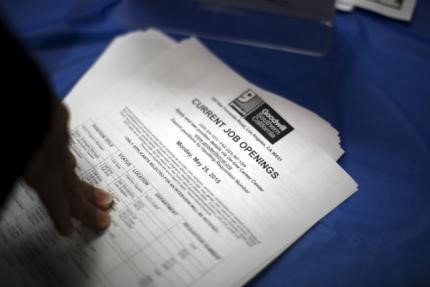By Geoffrey Smith
Investing.com -- The number of people filing initial claims for jobless benefits fell by slightly more than expected last week but, at 837,000, still reflected abnormally high levels of layoffs six months into the coronavirus pandemic.
The number of continuing jobless claims, fell much more clearly, by nearly 1 million, to 11.767 million. Continuing claims are reported with a one-week lag to initial ones.
The figures come with an important caveat: California has temporarily suspended reporting its data as it struggles to clear a backlog of unprocessed and modified claims. The state has put in place a " two week reset period that will help expedite new claimant payments, reduce fraud and tackle backlog issues," according to the Californian Employment Development Department.
Figures for the overall number of people claiming unemployment-related benefits, including Pandemic Unemployment Assistance, come with a lag of another week. They showed a rise of 454,000 to 26.53 million.
The data come a day after payrolls processor ADP (NASDAQ:ADP) reported that the private sector hired nearly 750,000 people in the month through mid-September, suggesting that workers are finding it easier to get rehired after the initial round of pandemic-related layoffs.
Separately, fresh data showed the further erosion of consumers' willingness, or ability, to spend as a result of the pandemic. Personal incomes fell 2.7% in August, their third decline in four months, while personal spending growth weakened to 1.0%, from a downwardly-revised 1.5% in July. The spending numbers showed that the personal consumer expenditure basket of prices, the Federal Reserve's preferred measure of inflation, rose to 1.6%, above expectations for 1.4%.
The trajectory of both income and spending point to Americans dipping into their savings more to cover current expenses. The August savings rate of 14.1% was down from 17.7% in July, Liz Ann Sonders, chief investment strategist at Charles Schwab (NYSE:SCHW), said via Twitter although she noted this was still well off the crisis high of over 33%.
